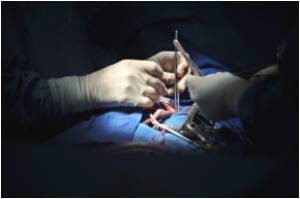New antibacterial coating for sutures is almost 1,000 times more effective than the most widely used coating and reduces infection after surgery, say researchers.
New antibacterial coating for sutures is almost 1,000 times more effective than the most widely used coating and reduces infection after surgery, say researchers.
Professor Gregory Tew, who is from UMass-Amherst, and colleagues explain that infection at the site of surgical incisions is one of the most common post-surgical complications that keep patients hospitalized longer and boost hospital bills. The most common antibiotic coating contains triclosan, but its use in many consumer products over the years has led to the emergence of strains of bacteria that shrug off its effects. Triclosan also can be absorbed into the body, raising concerns about possible adverse health effects. Another downside to triclosan: It slows the growth of bacteria, but does not actually kill those already present. That's why the scientists turned to PAMBM, a new substance designed from naturally occurring antimicrobial peptides that can kill a wide range of bacteria. And because of the way it works, PAMBM has a very low chance of causing bacterial resistance and the emergence of so-called superbugs.
The report described laboratory tests in which PAMBM greatly reduced the amount of bacteria compared to triclosan. In a head-to-head test with triclosan-coated sutures, those coated with PAMBM were much more effective against bacteria. "As bacterial resistance to current agents continues to increase and with resistance to triclosan now documented, the discovery of new antimicrobial agents that remain active in biomedical device coatings is essential," say the researchers.
Source-Eurekalert










